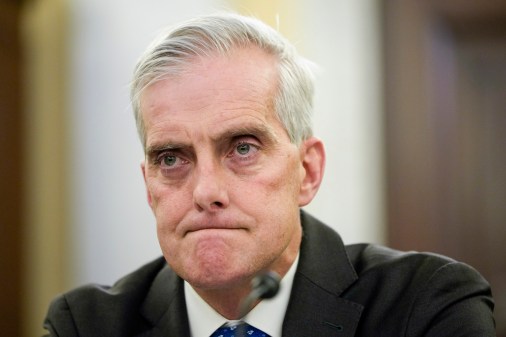
The federal government has entered a new era: The Data Button Movement.
It was about two years ago that Peter Levin, the chief technology officer at the Department of Veterans Affairs, and his team set out to create the project following a meeting at the Markle Foundation with other leading healthcare thought leaders.
The goal was in itself simple and complicated. Find ways to weed through the bureaucratic and interoperability mess to let patients get easy access to their health records that they could share with physicians for their own personal use.
The result was the Blue Button, a simple concept where a patient is provided a highly visible, clickable button to download his or her medical records in digital form from a secure website offered by their doctors, insurers, pharmacies or other health-related service.
It was democratizing data at its finest.
“The Blue Button in itself is not a great technological revelation,” said the energetic Levin, “but it really reflects the intensity and the need for people to get their data. And it also demonstrates that once people have access to data, they can do amazing things. And the private sector innovations are wonderful and creative. This is exactly what you hope for when you liberate data: more eyes, more ideas, more services. This is what we always had in mind”.
And now the Blue Button has blown up. The Office of Personnel Management announced it will be used by all healthcare providers on the federal health benefits plan, meaning it will be a part of nearly every federal employee’s healthcare plan.
The VA has increased its use, expanding it to include a veterans service records for easy access and to help in job searching. Levin said there are two simultaneous projects going on with the Button, one is increasing the capabilities of the button, basically building the infrastructure to handle 10 times the users at three times the speed.
There are also efforts to increase the button’s utlity by including features like radiological images, provider notes and the like to include in people’s electronic health records.
And, just two weeks ago, the Department of Energy announced the Green Button that lets consumers get more detailed information on energy usage. Levin tells us other agencies are looking to implement buttons of their own, making the number of different buttons available look like an open data bag of M&M’s.
The private sector is taking notice. United Healthcare is scheduled to join the program in a few weeks and companies like Walgreens have already signed on.
Did we mention that the Blue Button didn’t cost a dime to create?
“I really believe we have started a new industry here,” Levin said, pointing to the announcement of the Green Button initiative where companies – in that case two of the three largest energy companies in California – rallied around the cause to create new applications and services.
“My vision for the Blue Button is a steady, transparent migration into a complete and clinically valid electronic health record. We are moving from paper-and-sneaker medical information exchange to personal records that are electronically available to individual patents but still require a person-in-the-middle to get one clinic to another. What we want is convenient, and secure and automatic interoperability between institutions. Blue Button brings us much closer to that ideal situation,” Levin said.
What may end up being the Blue Button’s true legacy, though, is the mountains of data it can produce for research.
Levin and other government officials still talk reverentially about when the National Oceanic and Atmospheric Administration opened its data to the public in the early 1980s, leading to innovations like the Weather Channel and improved weather prediction models.
The Blue Button, and others like it around the government, are looking to use this data and communities of interested parties to fuel future innovations and improve the lives of citizens across the country.
“It’s an exciting time,” Levin said, “and the best part is that we are making a huge difference in areas we can all agree on. Access to data means access to new services, new jobs, and improved health outcomes. All this and more by just getting people their information. Now that’s good government.”




